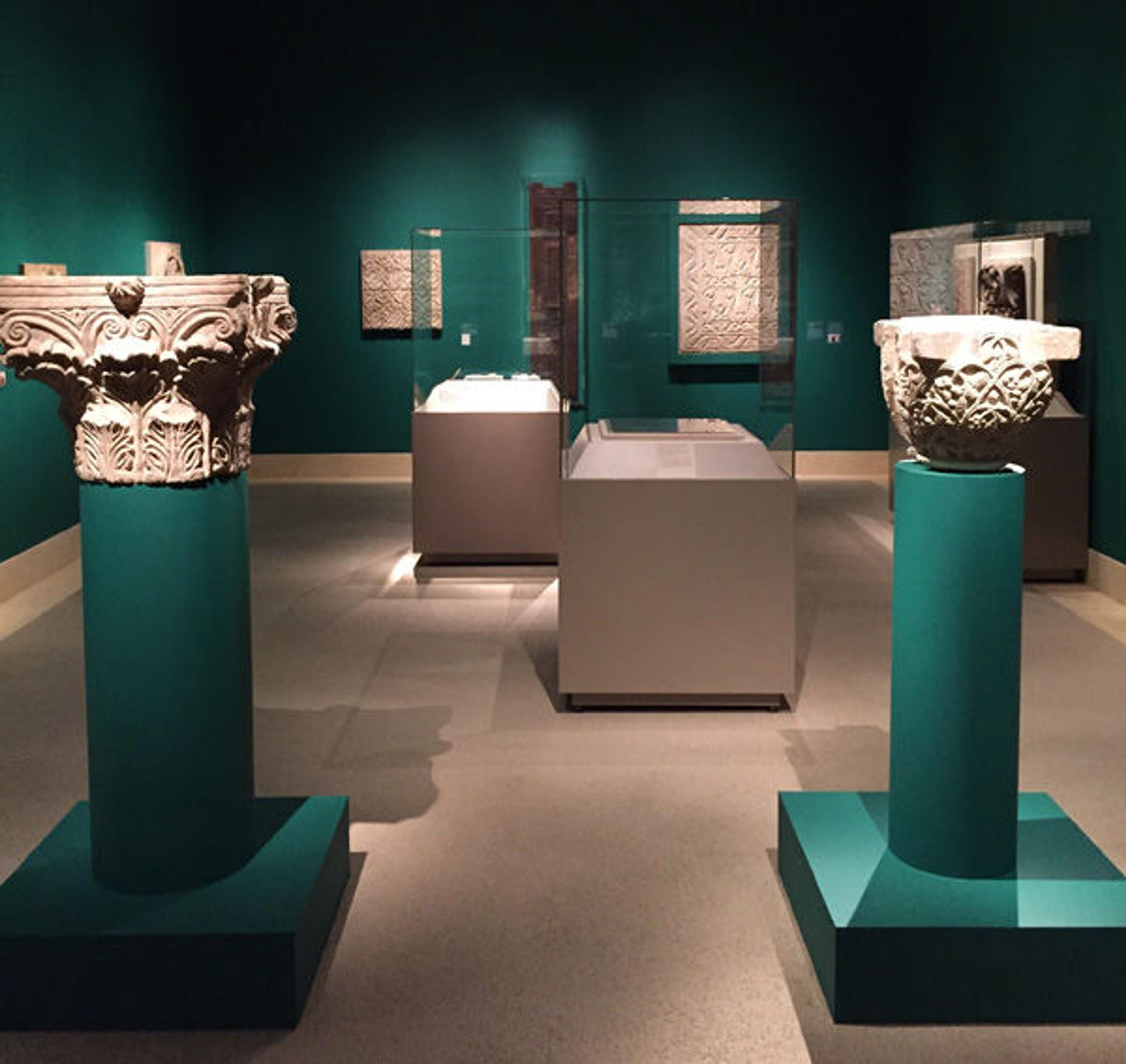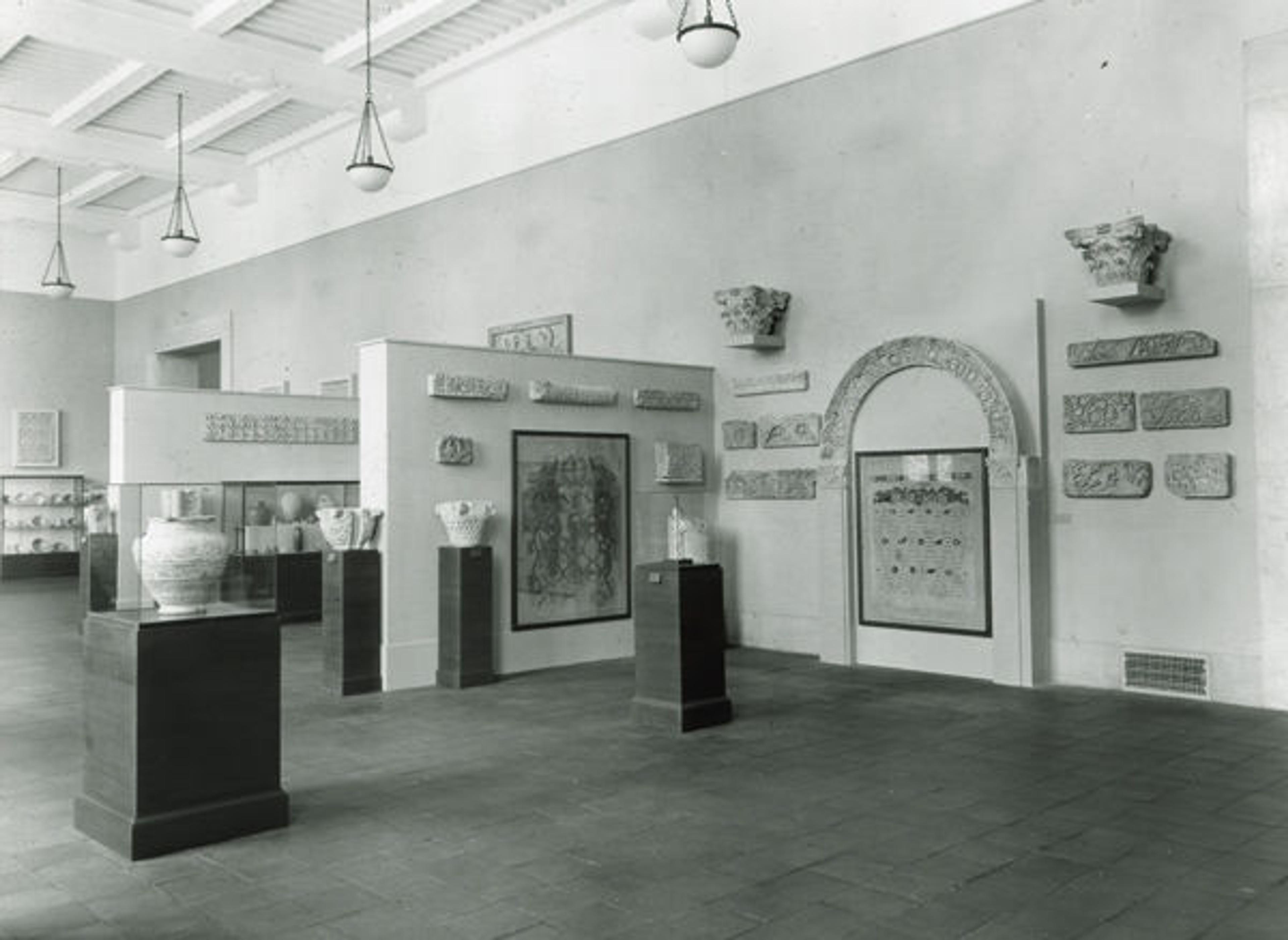
Installation view of Pattern, Color, Light in the Hagop Kevorkian Fund Special Exhibitions Gallery (gallery 458). Photo by the author
«One of the most important reasons for presenting exhibitions is their potential to bring together objects that are usually not seen side by side. Major exhibitions often draw from dozens of collections around the world, representing years of planning and logistics aimed at uniting the works of an artist or of a particular historical period under the same roof. Even within individual collections, space constraints and traditions of display mean that there are groups of objects that are rarely seen together. One aim of the current show in the Department of Islamic Art, Pattern, Color, Light: Architectural Ornament in the Near East (500–1000), is precisely that: to unite several groups of objects that are usually housed in separate storerooms, but that tell an interesting story when placed side by side.»
On view through January 3, 2016, Pattern, Color, Light showcases examples of architecture and furnishings from sites in the Near East that span a period of five hundred years. In it, objects from Byzantine Egypt are compared to contemporary objects from Sasanian Iraq, and both categories are then compared to examples from the subsequent early Islamic period. Placed together, these architectural fragments show how several aesthetic ideals important in the late antique Near East remained relevant in early Islam, but also how they evolved to suit changing needs and tastes.

Two examples of stucco wall panels excavated in Iraq with vegetal motifs from the same repertoire. At left, a composite panel made of molded stucco plaques found at Ctesiphon and dated to the sixth century. At right, a cast of a larger ninth-century carved panel made during excavations at Samarra from 1911 to 1913. Left: Panel, ca. 6th century A.D. Mesopotamia, Ctesiphon. Sasanian. Stucco; 25.5 x 25.5 in. (64.77 x 64.77 cm). The Metropolitan Museum of Art, New York, Rogers Fund, 1932 (32.150.5). Right: Cast of a Ninth-Century Wall Panel Carved in the "Beveled Style," 20th century. Iraq, Samarra. Islamic. Stucco; molded; H. 42 in. (106.7 cm), W. 33 1/2 in. (85.1 cm). The Metropolitan Museum of Art, New York, Purchase, Edward C. Moore Jr. Gift, 1927 (27.229.2)
As an example, take the two stucco wall panels shown above: one, at left, from Sasanian Iraq; and the other, at right, made three centuries later in Islamic Iraq. Seen together in the same light, one can compare them at a detailed level. It is clear, for instance, that the artist who created the later Islamic panel drew on the same repertoire of plant forms as his Sasanian predecessor. Both used trefoils (leaves with three lobes) attached to a vine scroll as a way to section off the surface, and it could even be argued that the tulip-like buds that feature prominently in the Islamic example are an evolved form of the pine cones or acorns found on the Sasanian object.
More interesting is that both convey a delight in the precise repetition of complex patterns. In the Sasanian example, this repetition was made possible with the use of molds. In the example from ninth-century Iraq, however, it is unclear if molds were used at all. If they were, it would have had to have been a completely different type, given the large size of the panels. Thus the later Islamic example suggests the continuity of an aesthetic interest despite a significant change in technology.
While scholars have often pointed to such connections, current display practice tends to separate pre-Islamic Near Eastern art from Islamic art. It is interesting to note, however, that this was not always the case. Before the formation of an independent Islamic Art department at the Met, in 1963, both of the panels above would have belonged to one curatorial department called the Department of Near Eastern Art, which housed objects from ancient Assyria all the way through the Islamic period.

Interior view of the galleries of the Department of Near Eastern Art, Wing H, first Floor, gallery 8; View looking southeast. Photographed May 11, 1939. © The Metropolitan Museum of Art
The photograph above shows one of the galleries of the Department of Near Eastern Art. The section nearest to the foreground of the photograph features a number of carved stone fragments excavated from Byzantine-period monasteries in Egypt, some of which are featured in Pattern, Color, Light. Directly behind that, on the other side of the partial wall, is a section with Sasanian material, and behind that still is a section featuring early Islamic art. A stucco panel from Samarra of the same type shown above hangs on the far back wall.
While Pattern, Color, Light doesn't claim to show objects that have never been seen before, it does reunite a group of objects that are usually not seen together. The Department of Islamic Art is happy to bring these works together again for a brief time, and we invite you to come see them for yourself and to make your own comparisons and contrasts.
Related Links
Pattern, Color, Light: Architectural Ornament in the Near East (500–1000), on view July 20, 2015–January 3, 2016
RumiNations: "Recipe for an Exhibition: The Installation of Pattern, Color, Light" (July 20, 2015)